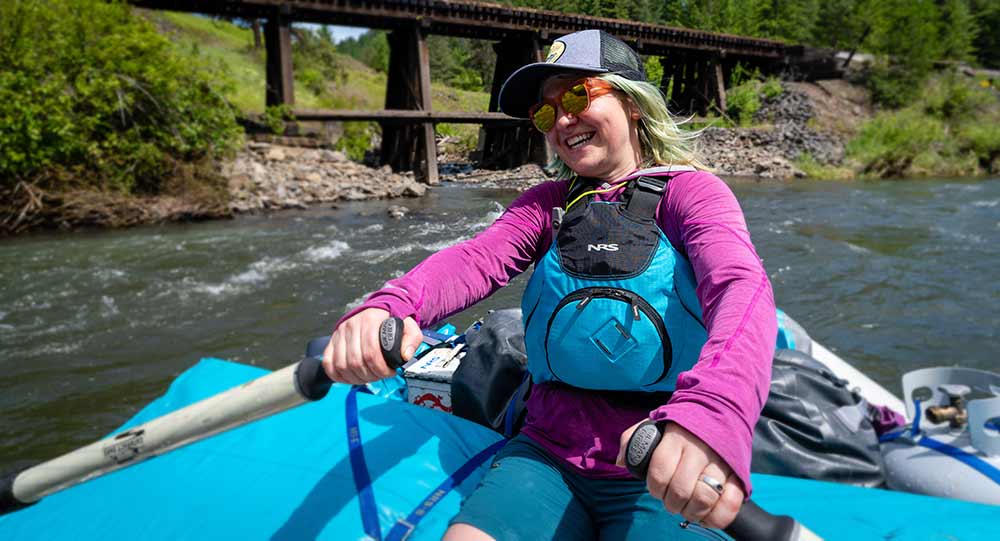Fabrics That Protect You From the Sun
On a day of boating, the sun feels wonderful. However, that sunlight comes with a hazard—ultraviolet (UV) radiation. UV is part of the electromagnetic spectrum that comes to the earth from the sun. It has wavelengths shorter than visible light, making it invisible to the human eye. However, its effects on our bodies can be profound.

Types of UV Radiation of Health Concern
- UVA is not blocked by the atmosphere and clouds. It penetrates skin more deeply than UVB. It has long been known to cause premature aging and wrinkling of the skin. Only fairly recently have scientists learned that it also contributes significantly to the formation of skin cancers. This is also the radiation generated by tanning lamps.
- UVB is partially blocked by the atmosphere and can also penetrate clouds. This is the wavelength that causes sunburn. It is a major cause of skin cancer and also contributes to premature skin aging.
How to Minimize Your Exposure to UV Radiation
- Stay out of the sun, especially between 10 am and 4 pm, when the sun is most intense. That’s not practical for most boaters and other outdoor folks.
- Apply sunscreen to exposed skin. See the article, “Sunscreen Labeling Revisions” for information on how to pick your sunscreen.
- Wear clothing that blocks the sun.
How Clothing Blocks UV Radiation
- Fabric Construction: Tight weaves reduce the space between threads, and thus the entry point for UV radiation.
- Type of Material: Synthetic fabrics like nylon and polyester do a good job of blocking UV. Bleached cotton is a poor barrier material.
- Fabric Treatments: Chemicals that absorb or disrupt UV radiation can be added by the manufacturer.
- Dyes: It’s the type of dye used on the fabric, not the color, which blocks UV. However, higher concentrations of these UV-disrupting dyes tend to make protective fabrics darker.
Sunscreens are rated for their Sun Protection Factor (SPF) against only UVB rays. Fabrics and other materials are rated for their Ultraviolet Protection Factor (UPF) and must protect against both UVA and UVB radiation.
All the fabrics in our sun protection apparel line are manufactured to block UVA and UVB radiation, giving boaters and other outdoor enthusiasts peace-of-mind protection.

How Fabrics Are Tested
Australia has the world’s highest rate of skin cancer. They have high UV levels and relatively clear skies. They originated the use of special fabrics for sun protection and developed standardized tests for measuring effectiveness. Other organizations like the American Society for Testing and Materials (ASTM) have also developed testing standards.
Testing is done by projecting a UV source of known concentration on a fabric and measuring the amount that passes through the material with a radiation-measuring instrument. Then a UPF rating is assigned to the fabric. Basically, a fabric with say a UPF 30 rating allows only 1/30th of UVA and UVB radiation to pass through.
How to Interpret UPF Ratings
This is the ASTM Standard for Sun Protective Clothing and Swimwear:
| UPF Rating | Protection Category | % UV Radiation Blocked |
|---|---|---|
| UPF 15–24 | Good | 93.3–95.9 |
| UPF 25–39 | Very Good | 96.0–97.4 |
| UPF 40–50+ | Excellent | 97.5–99+ |
Who Should Consider Wearing Sun Protective Clothing?
- Fair-skinned individuals that sunburn easily.
- People who spend a lot of time outdoors, especially in the summer months and in areas with increased sun intensity, such as those closer to the equator and near sun-reflective surfaces like water, sand and snow.
- Children often object to sunscreen lotions, so sun protective clothing is much easier on adults than chasing kids down to regularly reapply sunscreens.
- Anyone who’s concerned about skin aging and skin cancer can benefit from sun protective clothing. Skin damage from UV radiation exposure is cumulative, so even if you don’t burn, damage is still occurring. In 2010, 9,154 people in the United States died from skin cancer, more than one an hour.
Yes, exposure to UV radiation carries a significant health risk, but you don’t have to give up your outdoor lifestyle. You’ve got lots of tools at your disposal: wear sun protective clothing, use at least an SPF 15 rated sunscreen on exposed skin, wear quality sunglasses and choose wide-brim hats.
Enjoy the Sun, Boat Often & Boat Safe
 NRS Gift Card: Always Fits, Always Wanted
NRS Gift Card: Always Fits, Always Wanted




